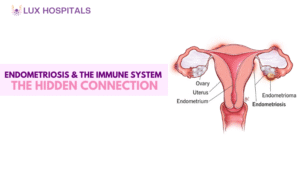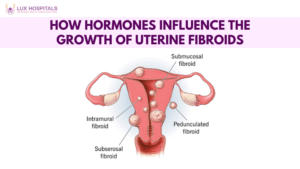Female Sexual Dysfunction: How It Affects Women and Ways to Overcome

Female sexual dysfunction affects many women but remains a sensitive and often undiscussed topic. It involves ongoing issues with sexual desire, arousal, orgasm, or pain that cause distress or strain in intimate relationships. While it can affect women of all ages, hormonal shifts, emotional health, and physical conditions often play a significant role. Understanding female sexual dysfunction is the first step in breaking the stigma and finding effective treatments.
What is Female Sexual Dysfunction?
Female sexual dysfunction is a condition where a woman consistently experiences problems with sexual response or desire. This dysfunction can manifest in one or more phases of the sexual response cycle—desire, arousal, orgasm, and resolution. To be classified as a dysfunction, these issues must cause personal distress or difficulties in relationships.
Common Types of Female Sexual Dysfunction
Female sexual dysfunction can be categorized into several types:
- Hypoactive Sexual Desire Disorder (HSDD): Reduced or absent sexual interest.
- Sexual Arousal Disorder: Inability to maintain arousal during sexual activity.
- Orgasmic Disorder: Difficulty achieving orgasm even with adequate stimulation.
- Sexual Pain Disorders (e.g., Dyspareunia, Vaginismus): Experiencing pain during intercourse.
Every kind of female sexual dysfunction has a varied impact on sexual health and may call for a different type of treatment.
Causes of Female Sexual Dysfunction
Several physical, emotional, and psychological factors contribute to female sexual dysfunction, including:
- Hormonal Changes: Menopause, pregnancy, and breastfeeding can alter estrogen and testosterone levels.
- Medical Conditions: Diabetes, heart disease, neurological disorders, and cancer treatments can interfere with sexual function.
- Medications: Antidepressants, antihypertensives, and hormonal therapies may affect libido.
- Mental Health Issues: Depression, anxiety, and past trauma can significantly lower sexual interest or satisfaction.
A combination of these factors often leads to female sexual dysfunction.
Hormonal Influence on Sexual Function
Hormones play a key role in regulating desire, lubrication, and sensation. When estrogen levels drop during menopause, it could result in vaginal dryness, thinning of the vaginal wall, and decreased blood flow to the genitals—all contributing to female sexual dysfunction. Similarly, arousal and satisfaction may be impacted by reduced testosterone levels, which are equally crucial for female libido.
Psychological and Emotional Factors
Stress, anxiety, relationship problems, and past sexual trauma are major psychological contributors to female sexual dysfunction. Negative self-image, guilt, or fear can reduce interest in intimacy. Resolving sexual dysfunction frequently requires addressing these emotional issues in treatment.
Physical Health and Chronic Illness
Diabetes, arthritis, obesity, multiple sclerosis, and other chronic illnesses can all affect sexual responsiveness by decreasing blood flow, changing nerve function, or producing discomfort and exhaustion. Women living with chronic pain conditions often report lower sexual desire, contributing to female sexual dysfunction. Addressing the underlying medical issue can usually improve sexual function.
Impact of Medications
Many medications, especially SSRIs (used for depression and anxiety), can inhibit libido, arousal, or orgasm. Female sexual dysfunction can also result from certain blood pressure and allergy drugs. Symptoms can frequently be resolved or reduced by changing or adjusting medications under a doctor’s supervision.
How Female Sexual Dysfunction Affects Quality of Life
Female sexual dysfunction doesn’t just affect physical intimacy—it can profoundly impact emotional well-being and relationships. It often leads to feelings of inadequacy, frustration, or isolation. When left unaddressed, it can strain partnerships and decrease overall life satisfaction.
Diagnosis of Female Sexual Dysfunction
A comprehensive evaluation by a gynecologist or sexual health specialist is required. This includes physical examinations, hormone level tests, a thorough medical and sexual history, and even a psychological evaluation. Identifying the issue accurately helps develop a successful treatment strategy for female sexual dysfunction.
Treatment Options for Female Sexual Dysfunction
Treatments differ based on the nature and origin of the dysfunction and may include
- Counseling and Sex Therapy: Helps address emotional and psychological barriers.
- Hormone Therapy: Estrogen or testosterone therapy for hormonal imbalances.
- Medications: FDA-approved drugs like flibanserin (Addyi) or bremelanotide (Vyleesi) for HSDD.
- Lifestyle Modifications: Exercise, stress management, and improved communication with a partner.
A multi-dimensional approach is often most effective for resolving female sexual dysfunction.
Prevention and Self-Care Tips
- Keep the lines of communication open regarding sexual needs.
- Take part in regular exercise to increase circulation and mood.
- Limit alcohol, quit smoking, and manage stress.
- Schedule regular health checkups, especially during menopause.
Proactive sexual health practices can reduce the probability or severity of female sexual dysfunction.
When to See a Doctor?
- Persistent Symptoms: If sexual issues like low desire, pain, or difficulty with arousal or orgasm last more than six months.
- Emotional Distress: When these problems lead to frustration, anxiety, or emotional strain.
- Relationship Impact: If sexual difficulties negatively affect your relationship or intimacy with your partner.
- No Improvement with Lifestyle Changes: When self-care strategies or communication efforts don’t help.
- Concern Regarding Medical Causes: If you think there may be a persistent illness, hormone imbalance, or adverse drug reaction.
- Prevention of Complications: To avoid long-term psychological or relationship damage, seek professional support early.
- Expert Evaluation: A healthcare provider can conduct a comprehensive evaluation and recommend appropriate treatment for female sexual dysfunction.
Conclusion
Many women at various periods of life suffer from female sexual dysfunction, which is a real and treatable disorder. Recognizing the causes, whether hormonal, medical, or psychological, is the first step toward recovery. With open dialogue, medical support, and lifestyle changes, most women can regain satisfying sexual health. Don’t hesitate to seek help—female sexual dysfunction doesn’t have to define your relationships or your well-being.
Frequently Asked Questions
Symptoms include low sexual desire, difficulty becoming aroused, inability to reach orgasm, or pain during intercourse. These symptoms must be persistent and cause distress to qualify as dysfunction. Identifying the specific symptom helps guide proper treatment.
Causes range from hormonal imbalances and medical conditions to psychological and relational problems. Lifestyle choices and medications may also be important. Often, multiple factors contribute simultaneously.
Yes, many cases of female sexual dysfunction can be successfully treated. Treatment options may vary depending on the underlying problem: counseling, medication, or lifestyle changes. Early diagnosis improves outcomes.
Yes, it’s very common—studies suggest that around 40% of women experience some form of sexual dysfunction. Many women do not seek help even though it is common because they are embarrassed or misinformed. Recovery depends on candid discussions and medical advice. Depending on the underlying cause, treatment may include
Diagnosis involves a detailed history, physical examination, and sometimes hormone or psychological testing. Both the physical and emotional components must be assessed. When the diagnosis is accurate, treatment is more effective.




















